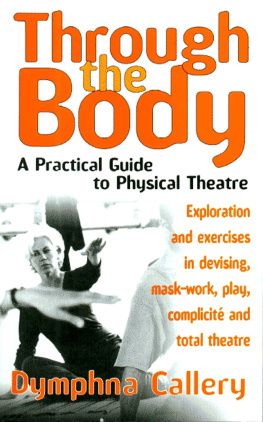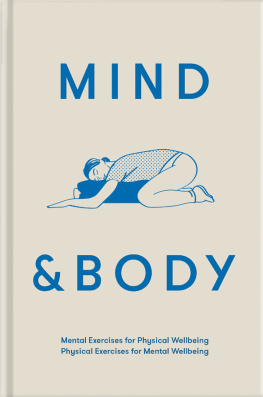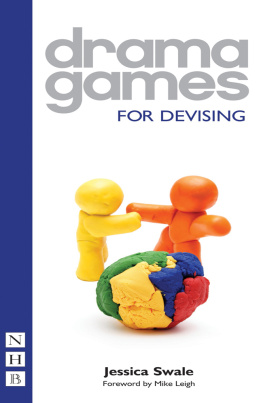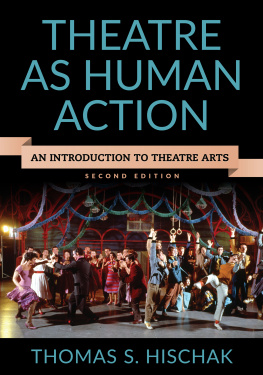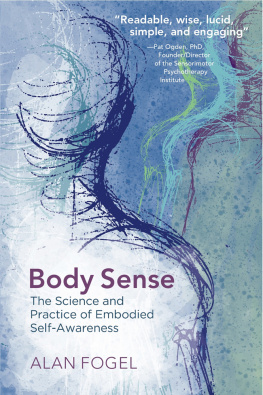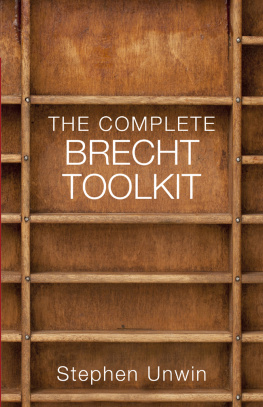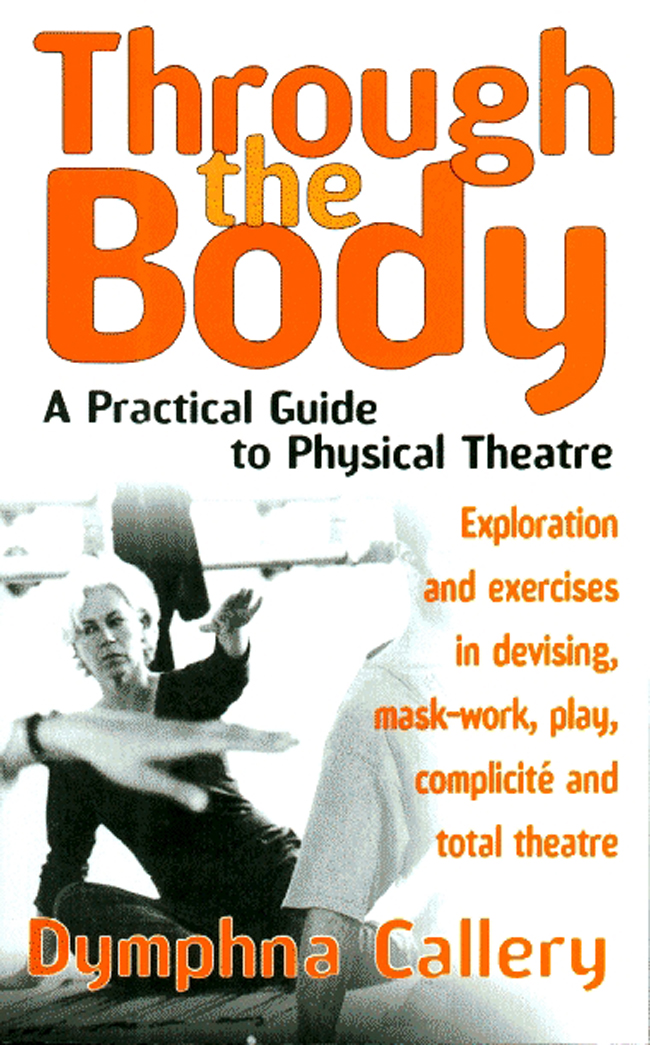DYMPHNA CALLERY
Through the Body
a practical guide
to physical theatre

Nick Hern Books
London
www.nickhernbooks.co.uk
Contents
Preface
Someone once said that talking about music is like dancing architecture: I wonder what they would say about a book describing the process of physical theatre. It is incredibly hard to talk about a creative process whose medium of exchange is primarily the body: even when teaching the spoken word comes second to the physical exercise. Although language is used through the teaching and creative process it plays a secondary role, a supporting role. You can explain, encourage, describe, coach, suggest images, metaphors and similes, you can use language with all its powers of description and suggestion, but only to help the other person (student or colleague) perform the physical movement with the qualities that you had envisaged: but finally the rightness dare one say truth? of the move or exercise is something that can only be felt, as Dymphna so aptly puts it, through the body.
This book is a mixture of three inter-related elements it is a mapping of the field of physical theatre, a gathering of collective wisdom about the teaching and making of that work, and some forty or fifty really useful exercises and games. Putting these three together mean that this book is a long-overdue manifesto for physical theatre which still remains marginal within the predominantly text-based theatre of Britain. New Theatre is often taken as being synonymous with New Writing, yet physical theatre, although New, is invisible to many theatre commentators because its performance text isnt written. Matters are made even worse because physical theatre isnt easy to define, which may explain why the first question of the book is What is physical theatre? Her introduction answers this question with some common sense definitions and descriptions. Hopefully this will create a more general awareness of this dimension of theatre and thus broaden our understanding of the scope and possibility of the medium.
When one thinks of a physical approach to theatre the names Eugenio Barba, Jerze Grotowski and Jacques Lecoq, immediately spring to mind. No-one can doubt the huge influence that these men have had on how we teach and practise contemporary theatre, and Dymphna makes amplereference to their writings and thought, but, just as importantly, she brings to our notice a new generation of teachers and practitioners who are making their own researches and discoveries. While it has been my job as director of the International Workshop Festival (IWF) to be informed about the field of professional training, I have found much in this book that is completely new to me and have been obliged to revise my image of the state of physical theatre in Britain. Its not just the references to a wider body of work she includes lesser-known figures such as Roy Hart and Moshe Feldenkrais but her acknowledgement of young British practitioners like Lucy ORorke of Bouge-de-la, or Hayley Carmichael of Told By An Idiot. Of course it is important to know where the first ideas and impulses for this movement in theatre came from, but it is equally important for the British reader to know what is happening now, here in Britain. Scratch below the surface of West End and commercial theatre and you find a thriving culture of experiment and innovation.
I said that this book was a mixture of three things tour dhorizon of the field, and a gathering of theoretical reflections and practical exercises. The breadth of her reading and research is reflected in the bibliography, but this doesnt account for her feeling for practice. A key to this lies in her references to some of the video-documentations produced by Peter Hultons Arts Documentation Unit (notably, workshops given as part of the International Workshop Festival by Gennadi Bogdanov and Jos Houben in 1996). What her bibliography doesnt mention is that Dymphna has been a participant in many IWF workshops over the years: she may be an experienced teacher and now a published author but she still has the wisdom and humility to be open to new practices and approaches to theatre. Her book about practice is the result of experiences and understandings that have happened through her own body. I was first aware of her voice in the 1998 International Workshop Festival when the theme for the workshops and discussions was Rhythm. Dymphna was in the audience for every discussion and demonstration and became an invaluable contributor to our proceedings. One evening I needed to know the source for E.M. Forsters phrase Only connect Howards End came the reply from Dymphna. It is appropriate that it was she who proffered this information since Forsters injunction is most apposite when thinking about the contents and argument of Through the Body. One of the problems the book addresses is precisely the need to connect body and mind and its extension into practice and theory.
While it is true there is no canonical body of physical theatre performance, there is a certain body of knowledge that has been slowly built up over the last century. There is thankfully no universal system for creating or teaching physical theatre, however what does exist is a wealth of practical know-how, an oral tradition whose sources are often undiscoverable. This wisdom is passed between practitioners and from teacher to pupil in the form of exercises and games they are often introduced with the phrase I first came across this exercise when I was working with x, because very often no-one knows who first created it. Peter Brook tells the story of a friend who met him and was full of praise for his exercise. Which one is that? Brook asked. His friend demonstrated it and Brook smiled. Its a great exercise, and Ill use it now, but I didnt create it. This is why I say the tradition is Oral passed on from practitioner to practitioner. However the exercises themselves arent as important as what one does with them. Very often a teacher will begin a description of an exercise by saying You probably know this exercise already, but please pay attention because I have put it to rather a different use. As he closes his book Theatre Games, Clive Barker hands on the responsibility for the games he has described to the reader:
The work set out is my work and no-one elses. It does not belong even to those actors who have worked for long periods with me. Whoever takes the work from me immediately makes it his own and from that moment accepts the responsibility for whatever he does. He is also entitled to the full credit for whatever use he can make of it.
Theatre Games, Methuen, p 217
With exercises you dont have creators but carriers.
This gets to the heart of the problem of the exchange of knowledge in the field of physical theatre can it be conveyed through the written word, that is, in a book? I think if Dymphna had simply offered us a series of recipes for making good theatre the attempt would have failed: what she has very wisely done is to mix the exercises and games with comment, anecdote and theoretical reflection. Apart from this commentary she has grouped them thematically and progressively another sensible idea. In this way she provides a context for the exercises, demonstrating what they mean for the actor and teacher, and what other fields they touch on.
Let me now develop the distinction between a book of theatre exercises and a recipe book. Firstly, the instructions in a recipe can be easily followedas long as you have the right ingredients and equipment and, secondly, whoever makes it, the recipe will taste much the same if followed to the letter which is not the case with a theatre exercise. There are three stages in understanding an exercise firstly grasping the instruction at the level of language, secondly translating it into a physical movement and thirdly being sensitive to the emotional effect this has upon you. Even in that bible of theatre practice, Grotowskis

